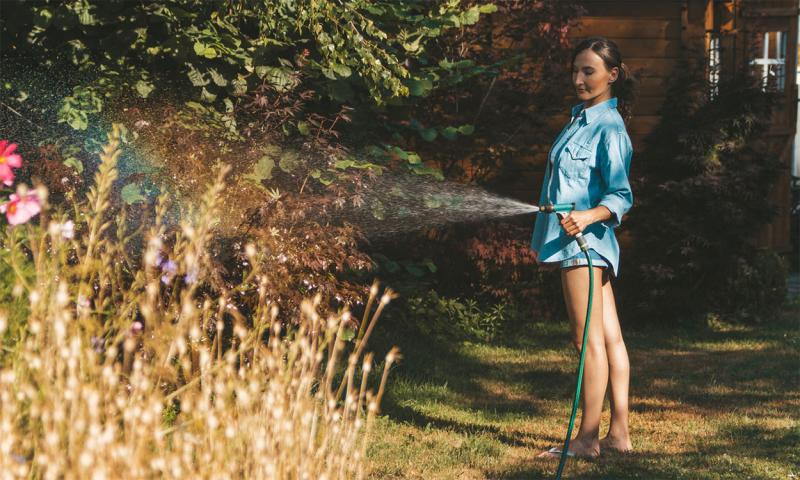
Written by Cindy Schnabel under the direction and review of Laura Edwards.
Drought conditions present challenges for gardeners but limiting one of the essential ingredients for a plant to thrive, like water, doesn’t mean it’s impossible to grow things. It means one has to pay closer attention and modify gardening techniques.
Below are some tips to help you through dry weather conditions. By following these tips, a gardener will be maximizing every drop of water. They can keep established plants growing and provide a good environment for new plants, even if the weather conditions are less than ideal.
Management Tips
-
Water plants deeply. On average, plants prefer one to one-and-a-half inches of moisture per week. In a drought, this may be hard to come by. To prepare your plants, watering deeply once a week is a better practice than watering more often with less amounts of water. Deep watering establishes a stronger and deeper root system, which will help sustain plants during hot, dry times. Watering deeply keeps more moisture in the soil. This means there is less evaporation.
-
Stop fertilizing! Fertilizer promotes fast growth. Fast growth means there is a need for more water. The plants will grow just fine, but at a slower rate. In addition, fertilizer salts can build up in the soil. Since there is less moisture to assist in the uptake of fertilizer or help it leech out in the soil, the buildup of salt can have a tendency to burn the plants roots.
-
Be vigilant at weeding. Weeding will provide more of an impact during dry conditions. Weeds compete for valuable resources, like sunlight, nutrients and water. By keeping weeds under control, you are providing a better environment for the plants. Less competition will help the plants have less stress, so they can grow better.
-
Water with a soaker hose or set up a drip system. These two delivery systems will provide water directly to the soil and the plant root system. They greatly reduce water runoff and evaporation. An added benefit is that it also keeps the foliage dry, which in turn helps to prevent fungal diseases.
-
Mulching is necessary. Applying two to three inches of mulch to your garden and flowerbeds will shield the ground from direct sun. This keeps the soil cooler, keeps moisture in the ground longer and keeps weeds at a minimum.
-
Dead head flowering plants early. Do not allow spent blooms to form into seeds. Plants going to seed expend large amounts of energy and water, which is best used to sustain a healthier plant.
-
Reduce or stop applying herbicide. First, applying herbicide when it is too hot turns the liquid to gas and can cause drift. Second, weeds do not take up the herbicide as well during dry conditions. Lastly, during dry spells, some weeds can become tolerant to herbicides.
-
Avoid using pesticides. Most pesticides are applied directly to the leaves of plants. Because of the hot, dry conditions brought on by a drought, the chemicals can damage the leaves and harm the plants.


